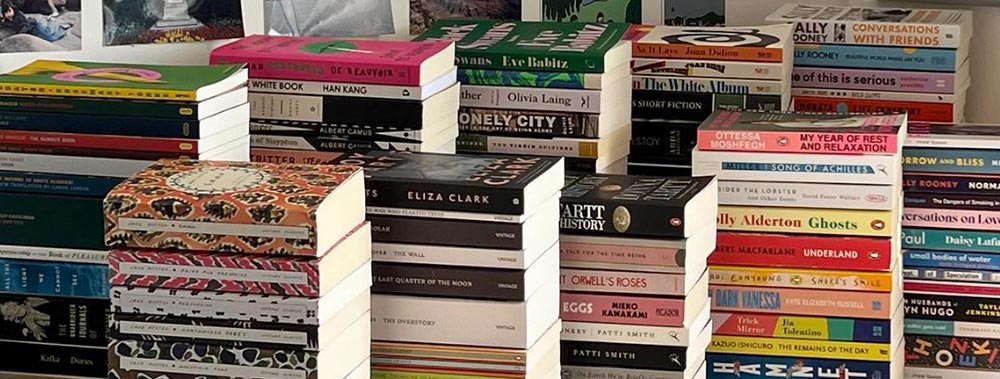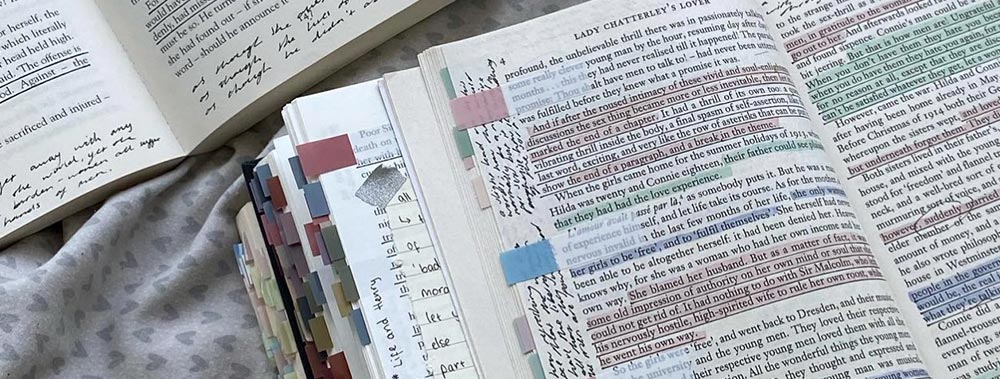The Catcher in the Rye: Summary, Plot, Characters, Literary Analysis & More
“The Catcher in the Rye” is a novel by J.D. Salinger, first published in 1951.
The novel stands as one of Salinger’s greatest critical and popular successes, capturing the essence of teenage angst and disillusionment.
Set in the backdrop of post-World War II America, the story follows Holden Caulfield, a rebellious teenager who decides to navigate the complexities of growing up, often refusing to conform to societal norms.
Holden’s encounters with characters like Jane Gallagher, Sally Hayes, and his sister Phoebe, take place in iconic locations like Central Park and Grand Central Station.
Through Holden’s lens, Salinger explores themes of alienation, identity, and the loss of innocence.
As Holden meets and interacts with various individuals, his internal struggles and unique perspective on the world unfold, providing readers with a poignant glimpse into the tumultuous mind of a young adult facing the challenges of a changing society.
The Catcher in the Rye Summary
Holden Caulfield, a teenager, takes center stage in “The Catcher in the Rye.”
Frustrated with the insincerity of the adult world, Holden decides to escape the confines of his prep school and embark on an impulsive journey through New York City.
Amid his wanderings, he refuses to conform to societal norms, engaging with characters like Sally Hayes, his former girlfriend, whom he telephones to seek companionship.
Holden’s inner turmoil and quest for authenticity drive his encounters with a diverse array of people.
Through Holden’s eyes, J.D. Salinger delves into themes of rebellion, alienation, and the loss of innocence, painting a raw portrait of a young individual struggling to find his place in an ever-changing world.

Through this work, Salinger explores themes of alienation, identity, and the loss of innocence.
Table of Contents
Summary The Plot Characters Key Themes Genres Language used Literary devices Summing upThe Plot
In “The Catcher in the Rye,” the plot revolves around teenager Holden Caulfield and his rebellious spirit. Disenchanted with the adult world, Holden’s journey is marked by his defiance as he refuses to conform.
He reaches out to his former flame, Sally Hayes, through a phone call, seeking a connection. Wandering through New York City, Holden grapples with his identity and societal expectations.
His encounters, both comical and poignant, shed light on his inner struggles and disillusionment. J.D. Salinger’s narrative delves into Holden’s quest for authenticity, showcasing the complexities of adolescence and the longing for genuine human connection.
Characters
Each character in J.D. Salinger’s “The Catcher in the Rye” contributes to Holden’s journey of self-discovery, reflecting the complexities of his emotions and interactions with the world around him. Now, let’s check them out :
Holden Caulfield
Holden Caulfield is the heart and soul of the novel. A disillusioned teenager, he rejects societal norms and refuses to conform to the adult world’s hypocrisy.
His narrative journey takes readers through his thoughts and encounters as he searches for authenticity in a world he finds phony.
Sally Hayes
Sally Hayes is a former girlfriend of Holden’s. Their complex relationship is marked by a telephone call and a failed attempt to reconnect.
Sally embodies Holden’s struggle to relate to others, reflecting his longing for genuine connections amidst his disillusionment.
Jane Gallagher
Jane Gallagher is a key figure from Holden’s past. His contemplations about her reveal his vulnerability and emotional turmoil.
Jane represents innocence and authenticity in Holden’s eyes, a contrast to the superficiality he sees in others.
Phoebe Caulfield
Holden’s younger sister, Phoebe, offers a glimpse into his softer side.
Their interactions demonstrate Holden’s longing to protect her innocence from the harsh realities of the world, highlighting his underlying care and concern.
Allie Caulfield
Allie, Holden’s deceased younger brother, casts a shadow over the story. Holden’s memories of Allie reflect his struggle with loss and his difficulty in letting go of the past.
Carl Luce
A former schoolmate, Carl Luce represents Holden’s attempts to engage in intellectual and mature conversations. However, their interactions also showcase Holden’s inability to truly connect with others on a deeper level.
Mr. Antolini
Holden’s former English teacher, Mr. Antolini, offers a brief yet significant mentorship. His actions prompt Holden’s self-reflection, raising questions about the authenticity of his rebellious attitude.
Maurice
Maurice is a minor character who represents the harsh realities of the adult world. He plays a role in Holden’s experiences with the darker side of society, leading to a physical altercation.
Faith Cavendish
Faith is briefly mentioned as a woman Holden contemplates calling for companionship. She symbolizes Holden’s internal conflict between seeking connection and fearing rejection.
Sunny
Sunny is a young prostitute Holden encounters. Their interaction exposes his vulnerability and conflicting emotions, illustrating his struggle with his own desires and his perception of innocence.
Key Themes
The story delves into several themes that resonate with readers. One prominent theme is the alienation and disenchantment felt by the protagonist, Holden Caulfield.
His consistent feelings of detachment are evident when Holden breaks away from social norms and expectations. The novel also explores the loss of innocence, embodied in Holden’s desire to protect his sister Phoebe from the adult world.
Salinger’s portrayal of Holden’s inner thoughts as he sits, falls asleep, thinks, and even agrees reveals the complex interplay between his inner self and the external world.
The alienation felt by teenagers and the broader human struggle for authenticity and connection are central themes.
The Theme of Alienation
Holden Caulfield is a deeply alienated character who struggles to connect with others and feel a sense of belonging.
He often perceives people as “phony” and insincere, which intensifies his feelings of isolation. This alienation is evident in his interactions with friends, family, and even strangers.
He often distances himself from others, either physically or emotionally, as a way to protect himself from the disappointments he expects. His lack of genuine connections contributes to his sense of detachment from the world around him.
The Theme of Disenchantment
Holden’s disenchantment with the adult world is a central theme in the novel.
He perceives the adult world as hypocritical, corrupt, and superficial. This disillusionment is rooted in his personal experiences, such as the death of his brother Allie and the hypocrisy he observes in adults’ behavior.
Furthermore, Holden’s resistance to growing up and entering this world is evident in his desire to maintain his own innocence and to protect the innocence of his younger sister, Phoebe. His contempt for the adult world leads him to view childhood as a realm of purity and authenticity.
The Theme of Innocence
Finally, innocence is a motif that runs throughout the novel. Holden idealizes innocence and often yearns for simpler times, especially his memories of his deceased brother, Allie.
He believes that children are inherently genuine and uncorrupted, and he wants to preserve their innocence.
His aspiration to become the “catcher in the rye,” saving children from falling off a cliff into the complexities of adulthood, symbolizes his desire to shield innocence from the harsh realities of the world.
Holden’s connection to his younger sister, Phoebe, further underscores his longing to preserve the purity of childhood.
Genres in The Catcher in the Rye
“The Catcher in the Rye” defies easy categorization due to its blend of genres. Primarily a coming-of-age novel, it also incorporates elements of psychological fiction and bildungsroman.
The story’s focus on Holden’s journey of self-discovery aligns with the coming-of-age genre, while its exploration of his mental and emotional state adds depth in the psychological realm.
Additionally, the novel’s narrative style and themes contribute to its classification as a literary fiction work.
Its introspective nature, as Holden sneaks through his own psyche, and the vivid portrayal of settings like Greenwich Village and Pencey Prep School add layers to the narrative, making it a multi-dimensional work that resonates with various readers.
“The Catcher in the Rye” by J.D. Salinger is often categorized as psychological fiction and bildungsroman due to its exploration of the protagonist’s inner thoughts, emotions, and personal growth. Let’s delve into why these genres apply to the novel:
Psychological Fiction
Psychological fiction, also known as psychological literature or psychological realism, focuses on the internal experiences and mental processes of characters.
In “The Catcher in the Rye,” the narrative is intensely introspective, offering readers deep insights into Holden Caulfield’s thoughts, feelings, and perceptions.
Much of the novel is spent inside Holden’s mind as he reflects on his experiences, memories, and his relationships with others. His inner monologue reveals his struggles with alienation, disillusionment, and his ongoing battle against his own emotional turmoil.
The psychological depth of the narrative allows readers to understand the complex psychological landscape of the protagonist, making it a prime example of psychological fiction.
Bildungsroman
A bildungsroman is a coming-of-age novel that traces the protagonist’s moral, psychological, and emotional growth from youth to adulthood.
“The Catcher in the Rye” fits this genre as it follows Holden Caulfield’s journey over a few days as he grapples with the transition from childhood to adulthood.
Throughout the novel, Holden undergoes significant internal changes, coming to terms with his brother Allie’s death, confronting his feelings about his parents and past, and gaining insights into his own behavior.
The narrative captures his moments of self-discovery, culminating in his realization that he cannot preserve the innocence of others but must find his own place in the world.
This transformation and his eventual acceptance of the complexities of life align with the bildungsroman genre’s emphasis on personal growth and maturation.
In essence, “The Catcher in the Rye” is characterized by its deep psychological exploration of the protagonist’s mind and emotions, making it a psychological fiction, while its focus on Holden Caulfield’s journey toward self-discovery and maturity aligns it with the bildungsroman genre.
The novel’s ability to intimately portray the protagonist’s inner world and his growth as an individual contributes to its enduring impact and relevance.
Language used in The Catcher in the Rye
J.D. Salinger’s language in “The Catcher in the Rye” creates a distinctive atmosphere that mirrors Holden Caulfield’s internal struggles. The narrative alternates between candid and introspective moments.
For example, when Holden complains about the “phoniness” of the world, it echoes his inner disillusionment.
Salinger’s choice of language, such as Holden’s internal monologues as he argues with himself, writes in his journal, or calls out the shortcomings he perceives in others, serves to depict the inner turmoil and authenticity of the character.
The use of colloquial language and Holden’s unique voice immerse readers in his perspective, allowing them to experience the world through his eyes.
Literary devices in The Catcher in the Rye
Salinger employs a range of literary devices to construct a compelling narrative. Through Holden Caulfield’s distinctive voice, the author uses colloquial language to immerse readers in his perspective.
Salinger employs symbolism, like the title’s image of the “catcher in the rye,” to encapsulate Holden’s desire to shield innocence. The narrative unfolds as a series of flashbacks, revealing Holden’s past and motivations.
Additionally, Salinger employs irony and satire to critique societal hypocrisy, as exemplified by Holden’s interactions with characters like his history teacher and the inhabitants of Greenwich Village.
These devices create a richly textured portrayal of Holden’s complex psyche and the world he navigates.
Similes
J.D. Salinger’s use of similes provides readers with vivid comparisons that enrich their understanding and engagement with the narrative.
When Holden refuses to conform, he likens himself to “the only sane person” in a world gone mad, emphasizing his alienation.
The simile comparing Holden’s life to a “lousy movie” mirrors his discontent. When he telephones Sally Hayes, his words tumble out “like a madman,” capturing his emotional state.
Such similes immerse readers in Holden’s psyche, evoking empathy and insight into his turbulent thoughts, thus enhancing the novel’s emotional resonance.
Metaphors
Metaphors illuminate deeper meanings within Holden Caulfield’s journey.
Holden’s calls to Sally Hayes represent futile attempts to reconnect, echoing the larger theme of his struggle to communicate and forge connections.
His aimless wanderings through New York are metaphorical of his quest for self-discovery, where Holden sits and falls asleep, suggesting a search for meaning.
The metaphor of Holden as the “catcher in the rye” underscores his desire to preserve innocence, emphasizing his protective nature.
These metaphors layer the narrative, guiding readers to explore the intricate emotional landscape of Holden’s experiences.
Analogies
Analogies in the story serve as intellectual bridges, aiding readers in comprehending intricate concepts.
When Holden’s roommate leaves the radiator on, likening it to a “goddam furnace,” the analogy captures Holden’s frustration, illustrating his internal turmoil.
Comparing Holden’s thoughts to a “rotten black apple” provides an image of his disturbed mind.
When he calls Sally Hayes, comparing her to Julius Caesar’s date with Cleopatra, the analogy highlights his discontent with the superficiality of their relationship.
These analogies encapsulate Holden’s feelings, enabling readers to navigate his complex emotional landscape with greater clarity.
Imagery
Salinger’s artful use of imagery in “The Catcher in the Rye” crafts a rich tapestry of sensory experiences for readers.
Descriptions like Holden’s contemplation of Salinger writing, conjuring a body coming out of the earth, create haunting mental visuals that evoke emotion.
The vivid intensity of Holden’s arguments and his urgent calls to others immerse readers in the characters’ interactions.
As Holden writes in his journal, readers feel the tactile act and emotional weight of his introspection.
The imagery paints a world that captures the essence of Holden’s tumultuous journey, forging a powerful connection between readers and his inner struggles.
Symbolism
Salinger weaves an intricate web of symbolism throughout “The Catcher in the Rye,” infusing the narrative with layers of meaning.
The recurring motif of the rye field embodies Holden’s longing to protect innocence from the harsh realities of life.
When Holden claims to be the “catcher in the rye,” he encapsulates his mission to preserve the youthful purity he sees slipping away.
The metaphor of a mental hospital reflects Holden’s emotional state and his resistance to conform to societal norms.
Characters like Lillian Simmons personify the artificiality Holden despises, while the novel’s end, symbolized by the carousel’s circular motion, conveys the cyclical nature of existence, echoing themes of change and continuity.
Personification
Personification in “The Catcher in the Rye” enhances the book’s characters and setting, infusing them with human-like qualities.
When Holden telephones Sally Hayes, his nervous anticipation personifies the phone’s ominous ring.
As Holden falls asleep, the rain “screaming at the windows” creates a vivid atmosphere, giving nature a voice. The narrative skill, evident when Salinger wrote about a “terrible storm,” personifies the storm’s intensity.
These instances deepen the emotional connection between readers and the story, making characters and surroundings come alive in ways that resonate on both literal and metaphorical levels.
Hyperbole
Hyperbole, a deliberate exaggeration, intensifies the narrative’s impact. When Holden thinks, “Everybody’s always yelling at me,” he employs hyperbole to amplify his feelings of constant criticism.
Similarly, when Holden agrees, “I’m the most terrific liar you ever saw in your life,” his overstatement emphasizes his tendency to conceal the truth.
As Holden spends “about a thousand years” waiting for his date with Sally, his exaggerated perception magnifies his impatience.
These instances of hyperbole amplify Holden’s emotional landscape, revealing the depth of his inner struggles and enhancing readers’ engagement.
Irony
Various types of irony enrich the narrative’s texture and meaning. The phrase “If a body catch a body comin’ through the rye” carries situational irony, as it misinterprets the actual lyrics, echoing Holden’s yearning to protect innocence.
When Holden argues with the world’s “phoniness,” it employs verbal irony, contrasting his perspective with the superficiality he criticizes.
As Holden calls himself “the most terrific liar,” he embraces dramatic irony, highlighting the dissonance between his self-perception and reality.
These layers of irony mirror the complexities of American literature, enhancing readers’ engagement by challenging their expectations.
Juxtaposition
The story effectively underscores contrasts and stimulates contemplation.
When Holden leaves Pencey Prep School, the juxtaposition of his departure with his uncertain future amplifies his sense of aimlessness.
As his teacher asks Holden about his plans, the contrast between Holden’s evasive response and the teacher’s guidance underscores his resistance to conventional expectations.
The novel’s end, with Holden watching his sister Phoebe on a carousel, juxtaposes the cyclical motion with Holden’s yearning for stability.
The mention of Columbia University juxtaposed with his encounter with a young woman highlights Holden’s academic struggles and his internal conflicts about adulthood.
This technique engages readers by compelling them to consider the broader implications of these contrasts.
Paradox
“The Catcher in the Rye” employs paradoxes to delve into deeper meanings. When Holden’s head is “going around and around,” it signifies his mental turmoil.
At Ernie’s jazz club, the vibrancy of the music paradoxically contrasts with Holden’s alienation. The seemingly luxurious lavender room resonates ironically with the reality of adult phoniness.
Holden’s interaction with a young man in the bar reveals a paradox between Holden’s perceived wisdom and his actual innocence. As Holden continues wandering amidst contradictions, these paradoxes mirror his struggle to reconcile the complexities of adulthood and maintain his authenticity.
Allusion
The reference to natural history exemplifies Holden’s longing for stasis amid change. The concept of a new school alludes to Holden’s unease with transitions.
Radio City symbolizes the superficiality of show business. Holden’s wish to let his sister ride the carousel embodies his protective nature.
The mention of Little Shirley Beans and Salinger’s Catcher underscores innocence and Holden’s role as a protector.
Phoebe riding, akin to Shirley Beans, signifies Holden’s desire to safeguard purity. Maurice’s punch parallels Holden’s struggle against adulthood’s harshness.
References to Allie’s death, Elkton Hills, and an older brother add depth to Holden’s character. These allusions enhance readers’ comprehension and engagement with the story.
Allegory
The baseball glove becomes emblematic of Holden’s wish to preserve innocence, embodying his role as a would-be guardian.
Southern California, a land of superficiality, contrasts Holden’s quest for authenticity. Holden’s actions, such as checking the glove’s pocket or asking about ducks, symbolize his search for meaning.
His encounter with a young man and plea to let the body meet reflects his resistance to change. The boy singing serves as a metaphor for Holden’s yearning to protect youthful purity.
Phoebe’s school and the Edmont Hotel encompass his struggle between preserving innocence and confronting reality, creating a rich allegorical tapestry.
Ekphrasis
Ekphrasis subtly enriches the narrative. As Holden ends his visit to the Museum of Natural History, he contemplates the frozen carousel scene—a poignant snapshot of childhood innocence.
The portrayal of the children and Central Park’s pond, observed as Holden checks out of his hotel, captures a serene yet fleeting moment.
Through Holden’s asking about the ducks’ whereabouts, Salinger artistically paints a vivid mental canvas that mirrors Holden’s search for answers amidst life’s uncertainties.
These ekphrastic moments offer readers immersive glimpses into Holden’s inner world.
Onomatopoeia
The story employs onomatopoeic words to infuse the narrative with auditory depth.
When Allie died, Holden recalls the sound of his baseball glove thudding against the garage wall, evoking a poignant memory.
The mention of the wicker bar conjures the creaking and rustling that envelops the scene, adding a sensory layer that resonates emotionally with the reader.
These onomatopoeic elements enhance the storytelling, creating an immersive experience that draws readers into the world of the novel.
Repetition
Salinger strategically employs repetition to emphasize Holden’s recurring thoughts and fixations.
The phrase “If a body catch a body comin’ through the rye” becomes a mantra, underlining Holden’s desire to protect innocence.
The repetition of more money reflects materialistic concerns recurring throughout the narrative.
This technique reinforces the novel’s themes, creating an emotional resonance that immerses readers in Holden’s mental landscape.
The Use of Dialogue
Dialogue in this work serves as a revealing window into the characters’ personalities, the novel’s themes, and its narrative tension.
Holden’s questions about the ducks in the lagoon mirror his own uncertainty about the future.
Conversations with characters like Sally and Phoebe highlight his internal conflicts and yearning for authenticity.
Dialogue also functions as a dynamic tool to build tension, as Holden grapples with the discrepancies between his perceptions and the world around him.
Word Play
References to a golden ring symbolize Holden’s desire for stability and security.
The phrase “more money” echoes materialistic concerns and underscores societal values. When Holden asks about ducks’ whereabouts, the word “duck” takes on both literal and metaphorical meanings.
These instances of wordplay enhance character development and evoke deeper thought, enriching the novel’s narrative fabric.
Parallelism
Holden’s repeated questioning of what happens to the ducks in winter parallels his own uncertainties, highlighting his fear of change.
Parallelism underscores the novel’s central message of preserving innocence and authenticity amidst life’s complexities, resonating deeply with readers
Rhetorical Devices
Salinger employs rhetorical devices like rhetorical questions and parallelism to enhance persuasive impact.
Holden’s rhetorical questions, such as pondering about ducks and the carousel’s motion, engage readers to reflect on his inner turmoil.
Parallelism, like his recurrent thoughts about the rye field, underscores the novel’s themes and invites readers to contemplate Holden’s journey of self-discovery.
The Catcher in the Rye: FAQs
As readers delve into the intricacies of Holden Caulfield’s journey, a series of frequently asked questions emerge, each shedding light on the novel’s significance, its controversial nature, and its enduring relevance in education. In this section, we will address some of these questions.
What is the main message of The Catcher in the Rye?
The novel delves into themes of adolescent alienation and the loss of innocence. Holden Caulfield’s quest to preserve innocence in a world he sees as phony reveals the challenges of growing up and the struggle to maintain authenticity.
Why is Catcher in the Rye so controversial?
Its frank language, portrayal of teenage rebellion, and exploration of sensitive topics like sexuality and mental health sparked debates about appropriateness for younger readers. Some view its content as influential, while others perceive it as morally objectionable.
Why is Catcher in the Rye important?
The novel’s introspective narrative style and exploration of universal themes make it a touchstone for discussions on identity, adolescence, and societal disillusionment. Its lasting impact on literature and culture solidifies its significance.
Why is Catcher in the Rye taught?
Educators value its capacity to engage students in critical analysis of complex characters and themes. It offers insights into the human experience, making it a rich source for exploring literary techniques and cultural contexts.
What happens when Holden decides to leave Pencey?
Holden’s departure symbolizes his rejection of the conformist and artificial world of Pencey Prep. His ensuing odyssey in New York City exposes him to various facets of society, deepening his inner conflict and quest for authenticity.
Who is the target group for this novel?
“The Catcher in the Rye” primarily resonates with young adults and adolescents, as its themes mirror the challenges and uncertainties of their transitional phase. However, its timeless themes attract readers of all ages seeking to understand the human condition.
Summing up: The Catcher in the Rye: Summary, Plot & More
As you can see from this “The Catcher in the Rye” summary, this work offers a captivating exploration of adolescent angst and the search for authenticity in a world of superficiality.
Through Holden Caulfield’s introspective narration, J.D. Salinger artfully delves into themes of innocence, identity, and societal disillusionment.
The novel’s relatable protagonist and its evocative language resonate with readers, making it a timeless coming-of-age tale.
“The Catcher in the Rye” remains an enduring work that continues to resonate with generations, reminding us of the universal struggles of youth and the quest for meaning.
Other Notable Works by J.D. Salinger
If your fascination with J.D. Salinger’s storytelling extends beyond “The Catcher in the Rye,” you’ll find a rich literary landscape in these works:
- “Nine Stories” (1953): A collection of short stories that delve into the complexities of human relationships and emotions with Salinger’s signature introspection.
- “Franny and Zooey” (1961): This novel comprises two interconnected stories, exploring the spiritual and existential struggles of the Glass family, capturing their search for meaning in a disenchanted world.
- “Raise High the Roof Beam, Carpenters, and Seymour: An Introduction” (1963): These novellas offer insight into the eccentric Glass family dynamics, touching on themes of family, art, and introspection.
- “Hapworth 16, 1924” (A novella published in The New Yorker in 1965): An enigmatic piece known for its intricate narrative style, featuring a letter written by a young Seymour Glass.
Each of these works provides a glimpse into Salinger’s literary mastery, offering readers a chance to explore his unique narrative voice and his probing examinations of human existence.







